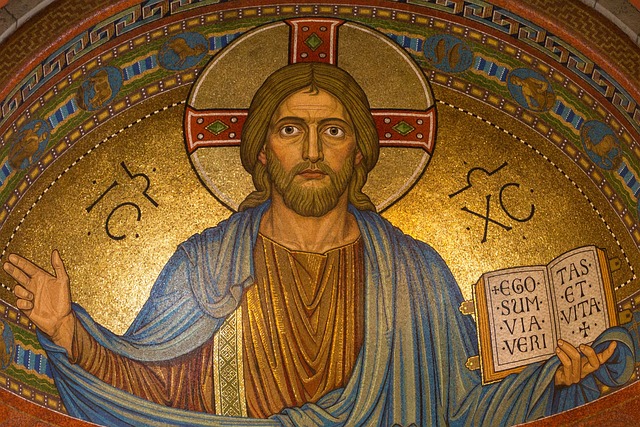Presbyterians practice infant baptism as a sacrament of initiation into the Christian faith.
Table of Contents
The Importance of Baptism in Presbyterian Beliefs
Do Presbyterians get baptized or christened? This is a common question that many people have when it comes to understanding the beliefs and practices of the Presbyterian Church. In order to answer this question, it is important to explore the significance of baptism in Presbyterian beliefs.
Baptism holds a special place in the Presbyterian faith, as it is seen as a sacrament that symbolizes the cleansing of sins and the initiation into the Christian community. It is a visible sign of God’s grace and a means of grace through which believers are united with Christ. In the Presbyterian tradition, baptism is not just a one-time event, but a lifelong commitment to living out one’s faith.
Unlike some other Christian denominations, Presbyterians do not use the term “christening” to refer to the act of baptism. Instead, they use the term “baptism” to emphasize the spiritual significance of the sacrament. This distinction is important because it reflects the Presbyterian belief that baptism is not simply a naming ceremony, but a sacred act that signifies a person’s entrance into the body of Christ.
In the Presbyterian Church, baptism is typically administered to infants, as well as to adults who have made a profession of faith. The baptism of infants is based on the belief that God’s grace is extended to all, regardless of age. It is seen as a way of welcoming children into the covenant community and nurturing them in the faith from an early age. However, it is important to note that baptism does not guarantee salvation in the Presbyterian tradition. It is a visible sign of God’s grace, but it is ultimately faith in Christ that saves.
When it comes to the actual practice of baptism, Presbyterians have different traditions and customs. Some Presbyterian churches practice infant baptism by sprinkling or pouring water on the child’s head, while others may immerse the child in water. The mode of baptism may vary, but the underlying belief remains the same – that baptism is a means of grace and a symbol of God’s love and forgiveness.
In addition to infant baptism, the Presbyterian Church also recognizes the baptism of adults who have made a profession of faith. This is often done through immersion, as it symbolizes the believer’s identification with the death, burial, and resurrection of Christ. Adult baptism is seen as a public declaration of one’s faith and a commitment to following Christ.
Regardless of the mode or age at which baptism is administered, the Presbyterian Church places great importance on the sacrament. It is seen as a visible sign of God’s grace and a means of grace through which believers are united with Christ. Baptism is not just a ritual or tradition, but a lifelong commitment to living out one’s faith and being part of the Christian community.
So, do Presbyterians get baptized or christened? The answer is clear – Presbyterians believe in the importance of baptism as a sacrament that symbolizes the cleansing of sins and the initiation into the Christian community. Whether it is the baptism of infants or adults, the Presbyterian Church views baptism as a visible sign of God’s grace and a means of grace through which believers are united with Christ. It is a sacred act that holds deep spiritual significance and is an integral part of Presbyterian beliefs and practices.
Understanding the Sacrament of Baptism in the Presbyterian Church

Do Presbyterians get baptized or christened? This is a common question that many people have when it comes to understanding the sacrament of baptism in the Presbyterian Church. The answer is that Presbyterians do indeed get baptized, but they do not use the term “christened” to describe this important ritual.
Baptism is a significant event in the life of a Presbyterian. It is a sacrament that symbolizes the washing away of sin and the initiation into the Christian faith. When a person is baptized, they are publicly declaring their commitment to follow Jesus Christ and become a member of the church community.
In the Presbyterian Church, baptism is typically performed by a minister or an elder. The person being baptized is usually an infant, although adults can also be baptized if they have not previously received the sacrament. The act of baptism involves the pouring or sprinkling of water on the person’s head, symbolizing the cleansing and renewal of their soul.
One of the key differences between Presbyterian baptism and other Christian denominations is the belief in infant baptism. Presbyterians believe that baptism is a sign of God’s grace and that it is not dependent on an individual’s ability to understand or make a conscious decision about their faith. Therefore, infants are seen as eligible for baptism because they are part of the covenant community and are being brought up in the faith by their parents and the church.
After the baptism ceremony, the person being baptized becomes a member of the church. They are welcomed into the community and are considered part of the body of Christ. This is an important aspect of Presbyterian baptism, as it emphasizes the communal nature of the faith and the importance of being connected to a larger spiritual family.
While Presbyterians do not use the term “christened” to describe baptism, they do recognize the significance of the name given to the person being baptized. In many cases, parents will choose a name for their child that has biblical or religious significance. This name is seen as a way of identifying the child as a member of the Christian community and as a reminder of their baptismal vows.
In conclusion, Presbyterians do get baptized as part of their faith tradition. Baptism is a sacrament that symbolizes the washing away of sin and the initiation into the Christian faith. It is typically performed on infants, although adults can also be baptized. While Presbyterians do not use the term “christened,” they do recognize the importance of the name given to the person being baptized. Baptism is a significant event in the life of a Presbyterian, as it marks their commitment to follow Jesus Christ and become a member of the church community.
Exploring the Differences Between Baptism and Christening in Presbyterian Tradition
Do Presbyterians get baptized or christened? This is a common question that arises when discussing the religious practices of Presbyterians. To understand the answer, it is important to explore the differences between baptism and christening in the Presbyterian tradition.
Baptism is a significant sacrament in the Presbyterian faith. It is a ritual that symbolizes the cleansing of sins and the initiation into the Christian community. In the Presbyterian Church, baptism is typically performed by sprinkling or pouring water over the head of the individual being baptized. This act represents the washing away of sins and the new life that comes with accepting Jesus Christ as one’s savior.
On the other hand, christening is a term that is often used interchangeably with baptism, but it carries a slightly different meaning. Christening specifically refers to the act of naming a child and welcoming them into the Christian faith. It is a ceremony that is usually performed on infants or young children. During a christening, the child is given a Christian name and is officially recognized as a member of the church.
In the Presbyterian tradition, both baptism and christening are practiced, but they are not seen as separate events. Instead, they are considered to be part of the same sacrament. When a child is baptized in the Presbyterian Church, it is also considered a christening. The child is given a Christian name and is welcomed into the church community.
It is important to note that not all Presbyterians practice infant baptism or christening. Some Presbyterian churches believe in the concept of “believer’s baptism,” which means that individuals should be baptized only when they are old enough to make a conscious decision to follow Jesus Christ. In these churches, baptism is seen as a public declaration of faith and a personal commitment to Christ.
Regardless of whether a Presbyterian is baptized as an infant or as an adult, the significance of the sacrament remains the same. It is a symbol of one’s faith and a commitment to live a life according to Christian principles. Baptism is seen as a means of grace, through which individuals are united with Christ and become part of the larger Christian community.
In conclusion, Presbyterians practice both baptism and christening, but they are not seen as separate events. Baptism is a sacrament that symbolizes the cleansing of sins and the initiation into the Christian community. Christening, on the other hand, specifically refers to the act of naming a child and welcoming them into the Christian faith. Whether a Presbyterian is baptized as an infant or as an adult, the significance of the sacrament remains the same. It is a symbol of one’s faith and a commitment to live a life according to Christian principles.
Debunking Common Misconceptions About Presbyterian Baptism Practices
Do Presbyterians get baptized or christened? This is a common question that often arises when discussing Presbyterian baptism practices. Many people are confused about the terminology and the specific rituals associated with this religious tradition. In this article, we will debunk some of the common misconceptions surrounding Presbyterian baptism and shed light on the actual practices followed by Presbyterians.
First and foremost, it is important to understand that Presbyterians do practice baptism. However, they do not use the term “christening” to describe this ritual. The term “christening” is more commonly associated with certain other Christian denominations, such as Anglicans or Catholics. In Presbyterianism, the preferred term is “baptism.”
Baptism holds great significance in the Presbyterian faith. It is considered a sacrament, a visible sign of God’s grace and a means of entering into the covenant community of believers. Through baptism, individuals are initiated into the church and publicly declare their faith in Jesus Christ.
Presbyterian baptism is typically performed on infants, although adult baptism is also practiced. The belief behind infant baptism is that it symbolizes the child’s inclusion in the covenant community from birth. It is seen as a way of dedicating the child to God and welcoming them into the church family. The parents and the congregation make promises to raise the child in the Christian faith and provide spiritual guidance.
The actual baptism ceremony in a Presbyterian church may vary slightly depending on the specific congregation, but there are some common elements. The minister, or sometimes an elder, administers the sacrament by pouring water over the child’s head or immersing them in water. This act symbolizes the cleansing of sin and the new life in Christ.
It is important to note that Presbyterian baptism does not guarantee salvation. It is seen as a means of grace, but ultimately, salvation is believed to come through faith in Jesus Christ. Baptism is a visible expression of that faith, but it does not replace the need for personal belief and commitment.
Another misconception about Presbyterian baptism is that it can only be performed by ordained ministers. While it is true that ministers typically administer the sacrament, in certain circumstances, elders or other church members may be authorized to perform baptisms. The key requirement is that the person performing the baptism must be a member of the Presbyterian Church.
Presbyterians also believe in the concept of “one baptism.” This means that if an individual has already been baptized in another Christian denomination, their baptism is recognized as valid and they do not need to be re-baptized. This reflects the belief in the unity of the Christian faith and the acceptance of different traditions.
In conclusion, Presbyterians do practice baptism, but they do not use the term “christening” to describe it. Baptism is seen as a sacrament and a means of entering into the covenant community of believers. It is typically performed on infants, symbolizing their inclusion in the church family. Presbyterian baptism does not guarantee salvation, but it is a visible expression of faith in Jesus Christ. While ministers usually administer the sacrament, others may be authorized to perform baptisms. Finally, Presbyterians recognize the validity of baptisms performed in other Christian denominations.
Conclusion
Presbyterians typically practice infant baptism as a sacrament of initiation into the Christian faith.


